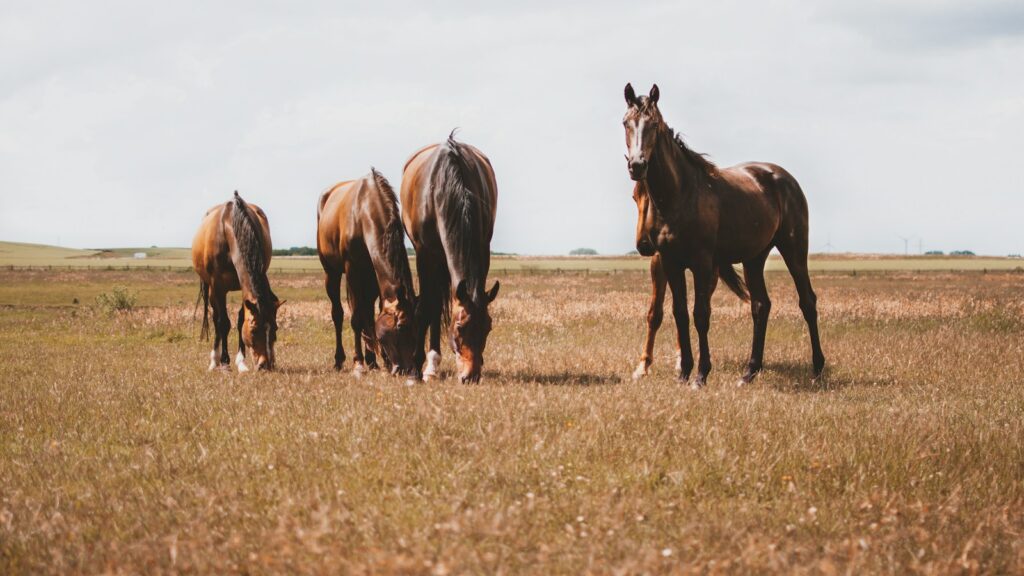Horse colors have fascinated humanity for centuries, from the majestic black steeds of medieval knights to the beloved palominos of Western films. These colors aren’t just beautiful variations—they carry cultural significance, historical importance, and sometimes even hint at certain temperament tendencies. Whether you’re an experienced equestrian or simply admire these magnificent animals from afar, understanding horse colors adds another dimension to appreciating these noble creatures. Let’s explore the most common coat colors found in horses around the world and the fascinating meanings and myths that surround them.
The Genetics Behind Horse Coloration

Horse coat colors result from a complex interplay of genes that control pigment production and distribution. At the most basic level, horse colors derive from two primary pigments: eumelanin (black) and pheomelanin (red/yellow). Various genes modify these pigments, creating the vast array of colors we see in horses today. The extension gene (E) determines whether black pigment will be produced throughout the coat, while the agouti gene (A) controls where on the body black pigment appears. These genetic foundations combine with numerous modifying genes that lighten, dilute, or pattern the coat in specific ways. Remarkably, scientists have identified over 30 different genes involved in equine coat color inheritance, making it one of the most complex color systems in domestic animals.
Bay: The Classic Beauty

Bay is perhaps the most common and recognizable horse color, featuring a reddish-brown body with black “points”—mane, tail, lower legs, ear edges, and muzzle. This coloration results from the interaction between the extension gene that allows black pigment and the agouti gene that restricts black to the extremities. Historically, bay horses have been prized for their versatility and reliability, often appearing in military units where uniformity was valued. In many cultures, bay horses symbolize dependability and steadfastness, with their balanced coloration thought to reflect a balanced temperament. The shade of bay can vary considerably from light (resembling copper) to dark (nearly appearing black in certain lights), with the most sought-after being the rich, mahogany bay that gleams with depth and dimension in sunlight.
Chestnut: The Fiery Spirit
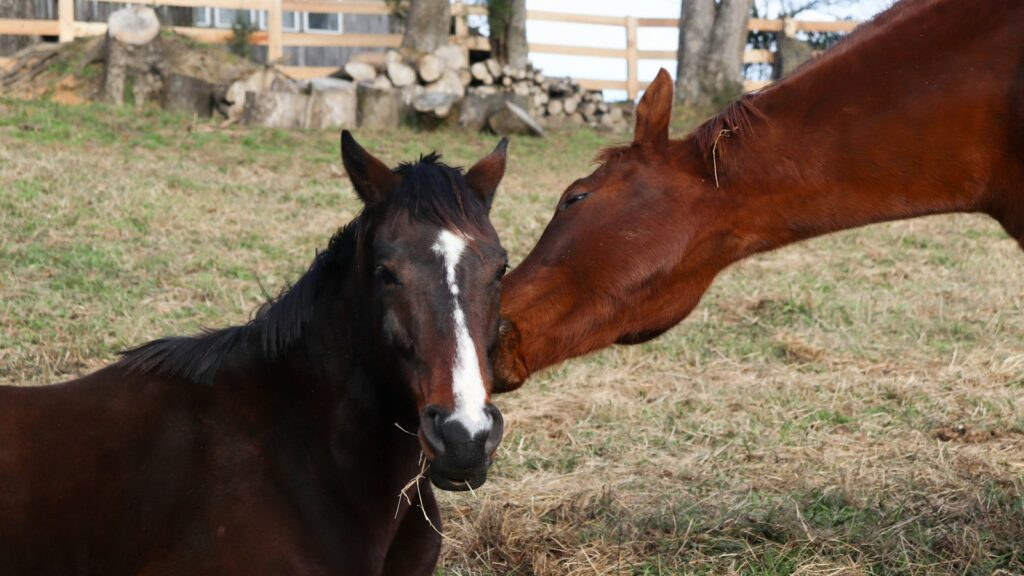
Chestnut horses display a uniform reddish coat without the black points seen in bays, resulting from a recessive version of the extension gene that prevents black pigment production. These horses range from light, golden shades (sometimes called sorrel, particularly in Western riding disciplines) to deep, liver chestnut that appears almost chocolate brown. Historically, chestnut horses have been associated with energy, passion, and sometimes a spirited temperament—a stereotype captured in the old horseman’s rhyme “chestnut hot, bay not.” Throughout European folklore, chestnuts, particularly those with flaxen (lighter-colored) manes and tails, were considered magical and associated with fairy tales. In modern equestrian sports, chestnut Thoroughbreds have distinguished themselves on racetracks worldwide, with famous examples like Secretariat showcasing both the color’s beauty and the athletic prowess often associated with it.
Black: The Mysterious Elegance

True black horses possess a coat that is uniformly black without any brown areas, the result of the dominant extension gene combined with a recessive agouti gene that allows black pigment to be expressed throughout the entire coat. These horses often hold special symbolic significance across cultures—representing power, mystery, and sometimes even omens in various mythologies. In medieval Europe, knights often chose black steeds to enhance their intimidating presence on the battlefield. Genuine black horses are relatively rare compared to very dark bay or brown horses that may appear black at first glance. A fascinating aspect of black horses is that their coats frequently “fade” to a brownish tone when exposed to sunlight, a process called sun-bleaching, with only those carrying specific “non-fading” genetic factors maintaining their jet-black appearance year-round regardless of sun exposure.
Grey: The Age-Defying Transformer
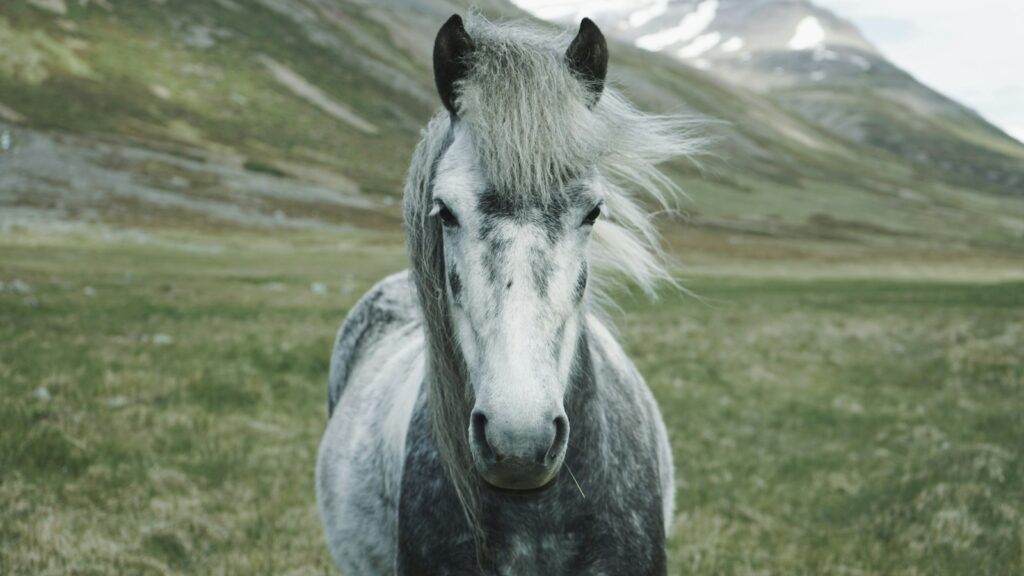
Gray horses present one of the most fascinating color phenomena in the equine world—they’re born a different color (often bay, black, or chestnut) and progressively lighten throughout their lives as white hairs gradually replace colored ones. The greying process is caused by a dominant gene that essentially turns off pigment production in hair follicles over time. Many grey horses develop distinctive dappling patterns during their color transition, creating the highly prized “dapple grey” appearance that unfortunately remains only temporary. Throughout history, grey horses have been associated with wisdom and ghostliness, featuring prominently in folklore as mounts for spiritual figures. Interestingly, the greying gene is linked to a higher risk of melanoma development, particularly in horses that reach a very light or white appearance, making regular skin checks an important health consideration for owners of grey horses.
Palomino: The Golden Treasure
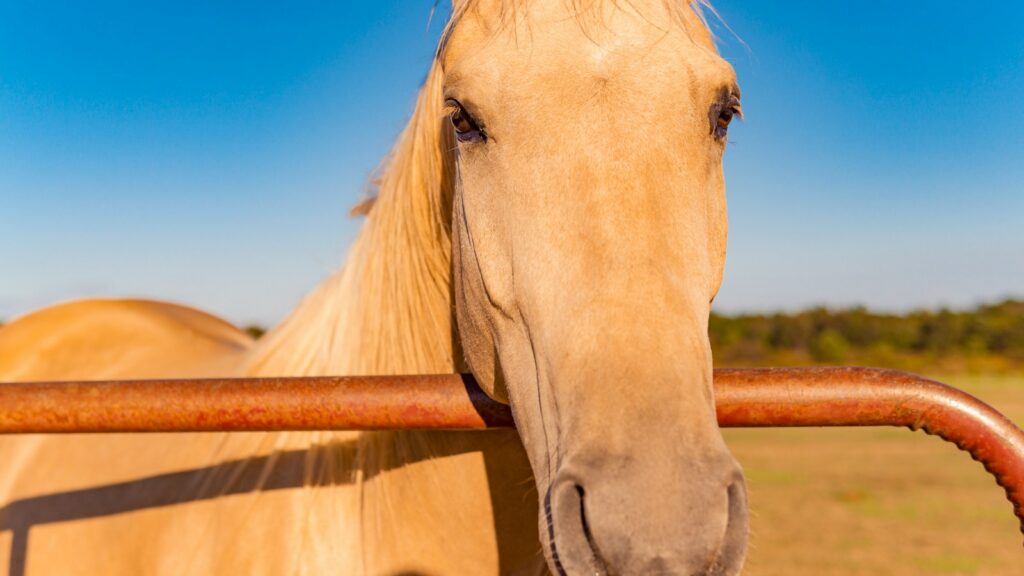
Palomino horses showcase a golden body color with a white or flaxen mane and tail, resulting from a single cream dilution gene acting on a chestnut base coat. Their stunning golden hue ranges from light champagne to a rich, newly-minted gold coin color, with the ideal shade often compared to a freshly minted gold coin. These horses gained immense popularity in American culture through famous palominos like Roy Rogers’ Trigger and Mr. Ed from television, cementing their place in popular imagination. In Spanish colonial traditions, palominos were often reserved for nobility and military leaders, signifying wealth and status. Though beautiful, the palomino color is technically not a breed but a color that can appear in many breeds, with the American Quarter Horse, Tennessee Walking Horse, and various light horse breeds frequently displaying this golden coat to spectacular effect.
Buckskin: The Desert Warrior
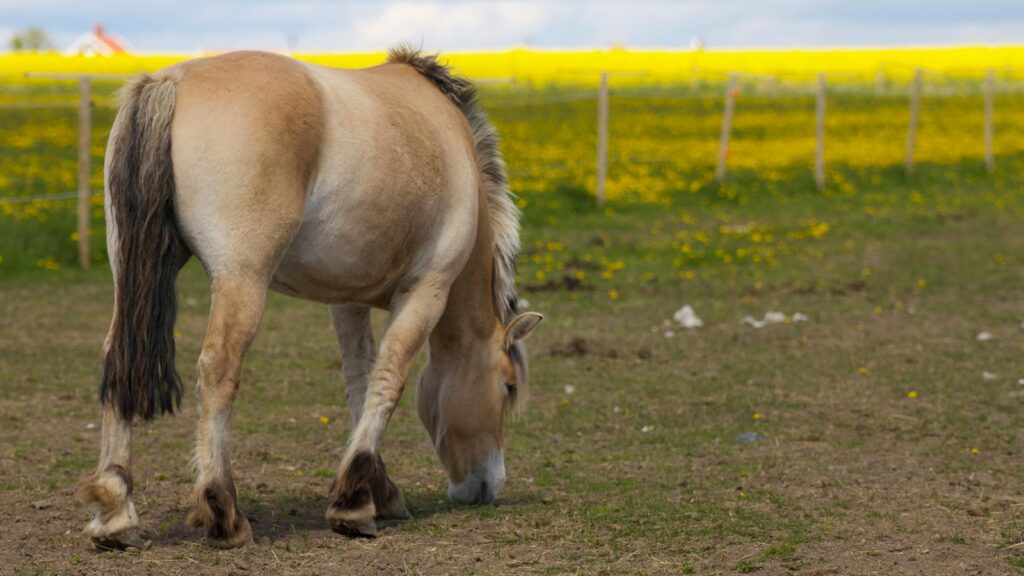
Buckskins display a golden or tan body color with black points (mane, tail, and lower legs), essentially representing a cream dilution gene acting on a bay base coat. Their coloration closely resembles that of deerskin or tanned leather, which gave rise to their name. Historically, buckskins were highly prized by Native American tribes and frontiersmen for their natural camouflage in desert and prairie environments. The distinctive color offered practical advantages during America’s westward expansion, blending well with natural surroundings while remaining visible enough to locate in twilight conditions. Famous buckskins include General George Washington’s mount during the American Revolution and numerous mounts of Western film stars, further cementing their association with strength and resilience. Genetically speaking, buckskins carry exactly the same gene that creates palominos, but the difference lies in their base coat color (bay rather than chestnut), showcasing how the same gene can create dramatically different appearances depending on the genetic foundation it works upon.
Dun: The Primitive Heritage
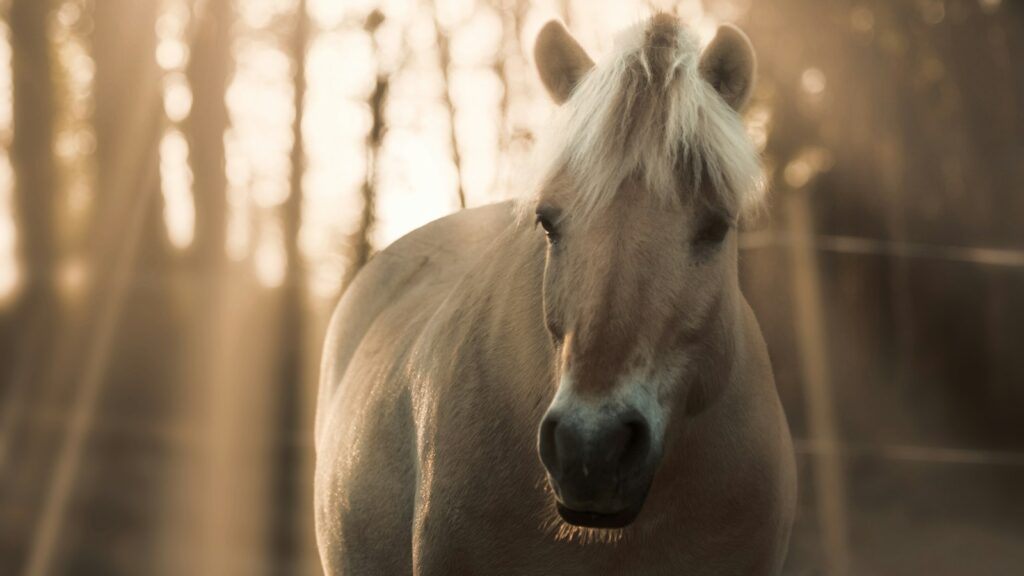
Dun horses exhibit a distinctive dilution pattern characterized by a body color ranging from sandy yellow to mouse-colored, accompanied by primitive markings including a dark dorsal stripe down the back, horizontal striping on the legs (zebra marks), and sometimes shading across the shoulders and forehead. This ancient coloration results from the dun gene, which many researchers believe represents one of the original wild horse colors as evidenced by its presence in Przewalski’s horses, the only truly wild horses remaining today. The primitive markings serve as natural camouflage, breaking up the horse’s outline when viewed by predators in grassy or wooded environments. In Native American cultures, particularly among Plains tribes, dun horses were often considered to possess greater stamina and survival instincts than horses of other colors. Modern genetic research has revealed that the dun gene changes the structure of individual hair shafts, creating a unique distribution of pigment that produces the distinctive coloration and primitive markings that have survived from prehistoric times.
Roan: The Speckled Mystery
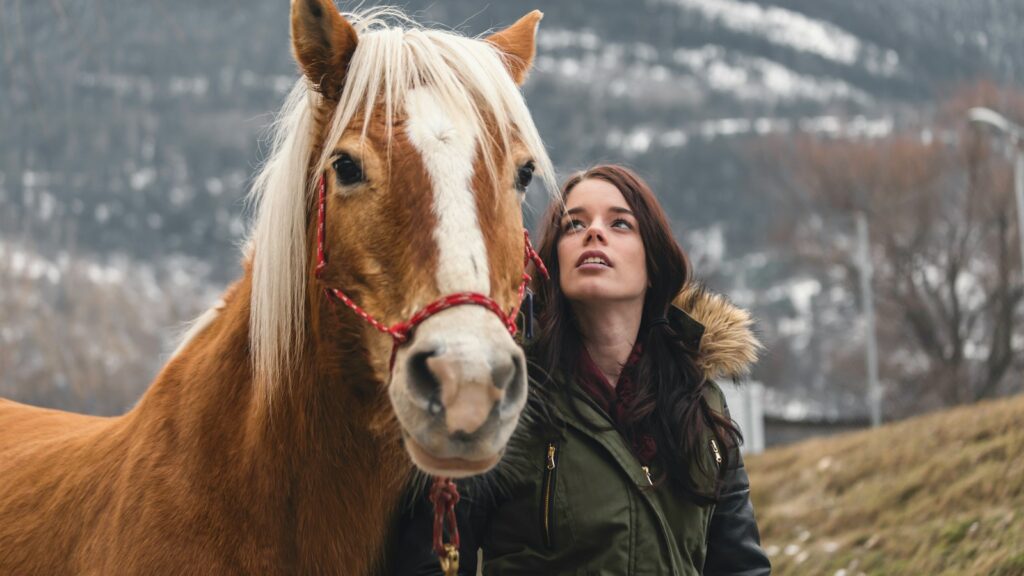
Roan horses display a distinctive pattern where white hairs are evenly intermixed with a base color throughout most of the body, while the head, lower legs, mane, and tail remain the solid base color. Unlike grey horses that change over time, roan horses are born with their characteristic mixture of white and colored hairs, maintaining a relatively consistent appearance throughout their lives. The three most common roan patterns are blue roan (black base), red roan (chestnut base), and bay roan (bay base), each creating a distinctively different overall appearance. Historically, roan horses were often favored by cavalry units for their unique appearance that made individual horses easily identifiable on the battlefield. The roan pattern results from a dominant gene that remains somewhat mysterious to geneticists, as it doesn’t follow typical inheritance patterns and appears to have links to lethal genetic combinations when homozygous (carrying two copies of the gene).
Appaloosa Patterns: A Spotted Heritage
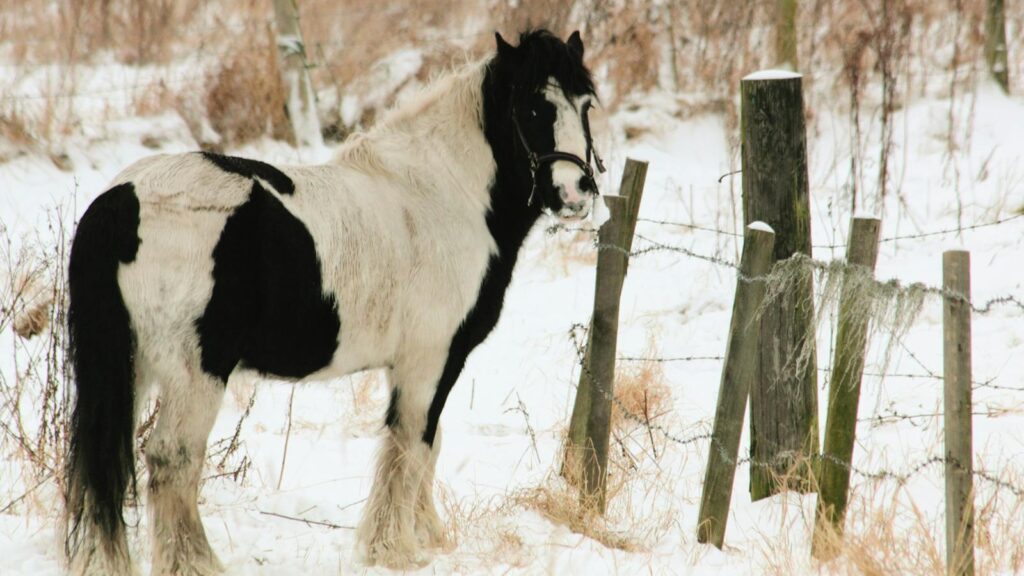
Appaloosa patterns encompass a diverse range of spotted coat patterns including leopard (white coat with colored spots), blanket (white patch over the hips with or without spots), and various other spotted combinations that create some of the most visually striking horses in the world. These distinctive patterns are closely associated with the Nez Perce tribe of the Pacific Northwest, who selectively bred for these spotted coats and developed the foundation for what would become the Appaloosa breed. Beyond their striking appearance, Appaloosa-patterned horses often display other physical characteristics including mottled skin around the muzzle and genitals, striped hooves, and a visible white sclera around the eye. The genetics behind Appaloosa patterns are complex, involving the leopard complex gene interacting with other modifying genes, resulting in the wide variety of spotted patterns observed. In many indigenous cultures, spotted horses were considered spiritually significant, often associated with night skies, the cosmos, or transformative power.
Pinto and Paint Patterns: The Canvas of Nature
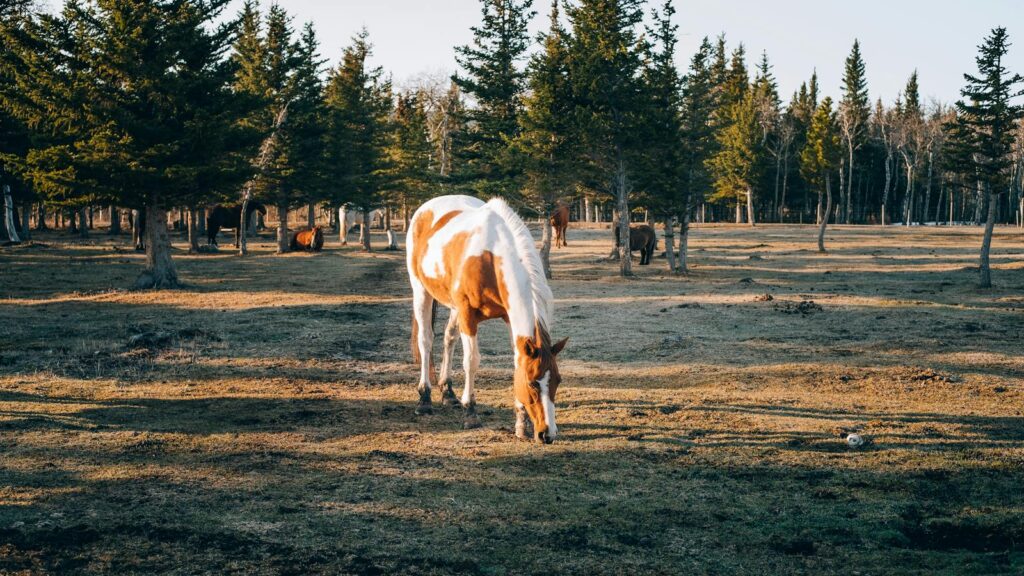
Pinto and Paint patterns feature dramatic patches of white and another color (often black, bay, or chestnut), creating horses that appear as living works of art with no two exactly alike. The main patterns include tobiano (white crosses the topline, legs often white), overo (white rarely crosses the back and head, often white), tovero (a combination of both), and sabino (white usually on the face and legs with roaning at the edges of the white patches). While “Pinto” refers to the color pattern itself, “Paint” specifically refers to horses with pinto coloration and American Quarter Horse or Thoroughbred bloodlines. These distinctive patterns have held cultural significance across continents—in Native American cultures, particularly among Plains tribes, medicine men often rode distinctively marked pintos, while in medieval Japan, samurai prized horses with dramatic white markings. Genetic research has revealed that these patterns result from several different genes controlling white spotting, with each gene creating distinct characteristic patterns that experienced breeders can often identify at a glance.
Cremello and Perlino: The Ethereal Beauties
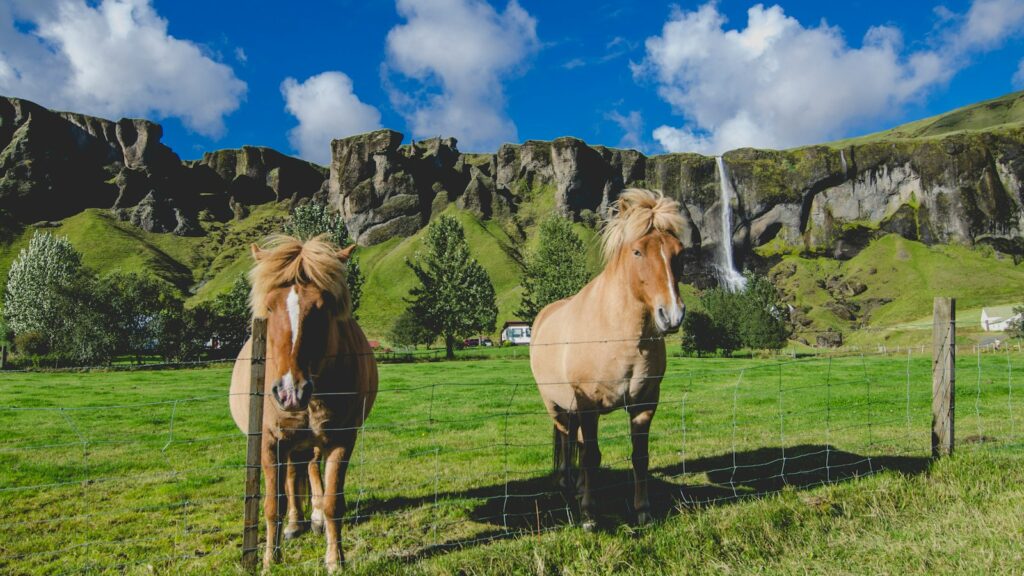
Cremello and perlino horses represent double-dilutions that create nearly white horses with distinct pink skin and blue eyes. Cremellos result from two cream dilution genes acting on a chestnut base, producing a horse with cream-colored coat and reddish or pink skin. Perkinsos, similarly, carry two cream dilution genes but on a bay base, resulting in a slightly darker body color with points (mane, tail, lower legs) that may appear rust or reddish-tinted. These horses were once mistakenly labeled as albinos, though they produce pigment and have a specific genetic makeup distinct from true albinism, which doesn’t exist in horses. Historically, these pale horses with blue eyes were sometimes considered magical or spiritual in various cultures, occasionally feared as unnatural or prized as divine depending on the cultural context. Today, cremello and perlino horses are valued in breeding programs for their ability to consistently produce cream-diluted offspring when bred to horses of other colors, making them genetic powerhouses for producing buckskins, palominos, and smoky blacks.
Cultural and Historical Significance of Horse Colors

Throughout human history, horse colors have carried profound cultural symbolism that transcended mere aesthetics. In Chinese tradition, the colors of horses were associated with directional energies—white horses with the west, black with north, red with south, and blue-grey with east—influencing which horses might be chosen for specific ceremonies or journeys. Native American tribes often attributed spiritual qualities to horses based on their colors, with medicine men prescribing horses of particular colors for healing rituals or vision quests. European military traditions developed complex color-based hierarchies, with monarchs often riding white horses, generals on bays, and standard cavalry on darker colors, creating visual organization on the battlefield. These color associations weren’t merely superstition but served practical purposes in societies where horses were central to transportation, warfare, and identity. Even today, the royal households of many countries maintain strict traditions regarding the colors of horses used in ceremonial processions, preserving cultural heritage that spans centuries of human-equine partnership.
Conclusion
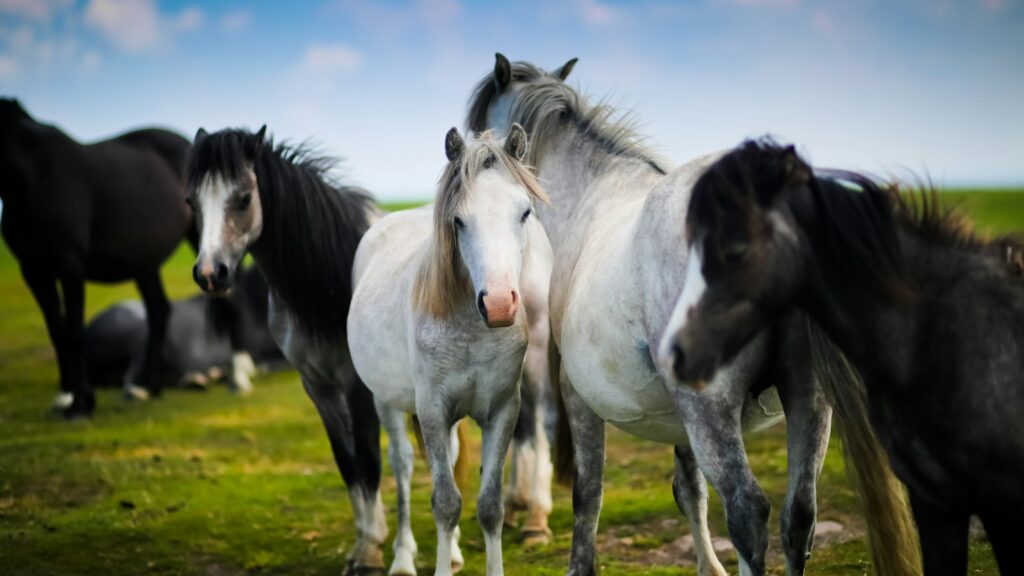
The fascinating world of horse colors represents far more than simple aesthetics. These distinctive coat colors and patterns reflect complex genetic mechanisms, carry rich cultural symbolism, and connect us to humanity’s long partnership with these magnificent animals. From the fiery spirit of the chestnut to the mystical presence of the black, from the golden gleam of the palomino to the primitive markings of the dun, each color tells a story of selective breeding, natural adaptation, and human preference through the centuries. Whether you’re drawn to the practical reliability associated with the bay or the striking uniqueness of spotted patterns, understanding the significance behind horse colors enriches our appreciation for equines and the important roles they’ve played throughout human history.

